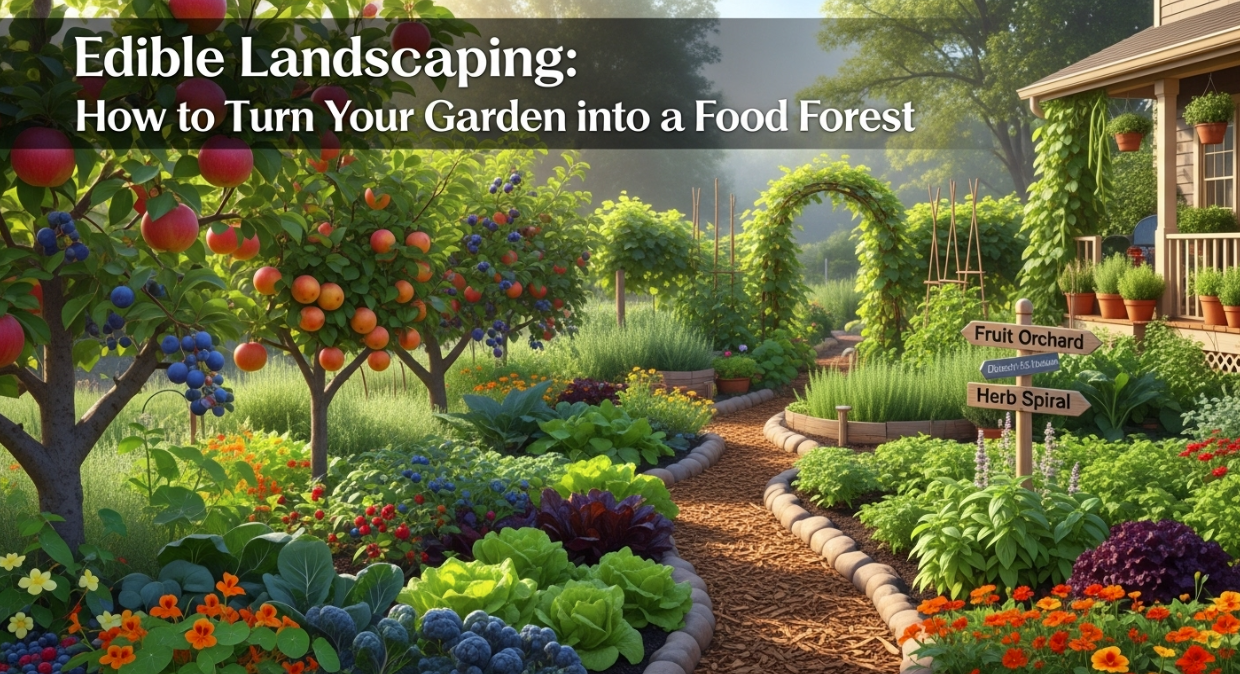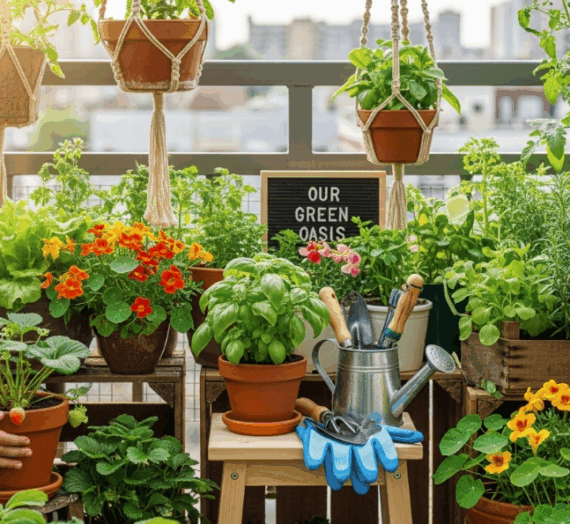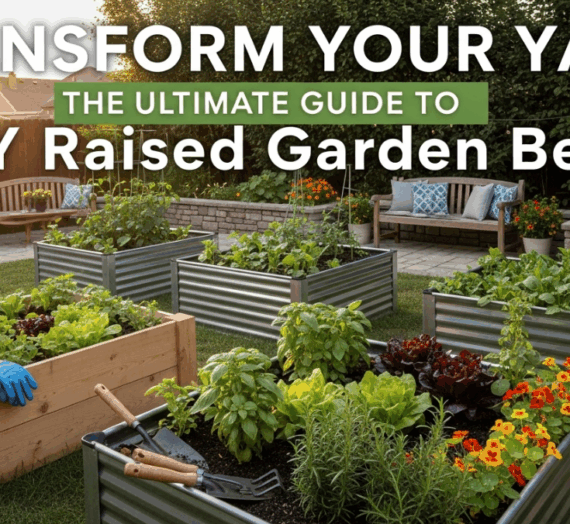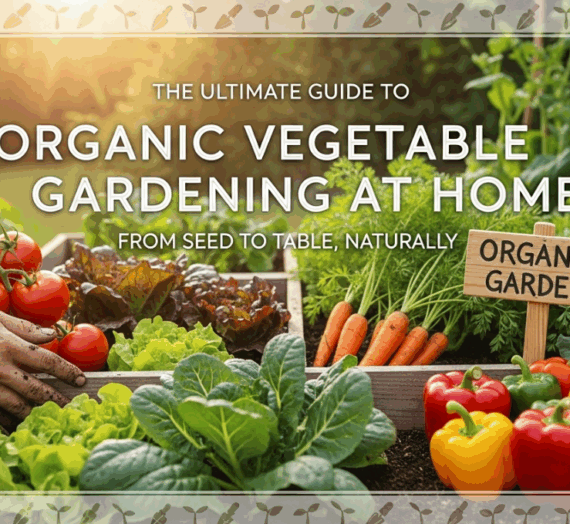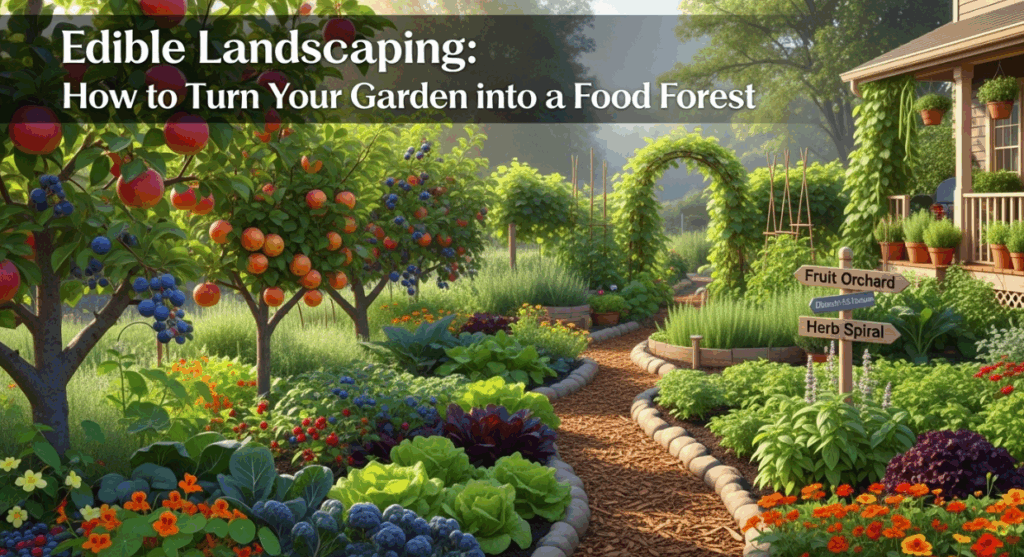
Introduction
Edible landscaping offers a revolutionary approach to sustainable gardening by blending aesthetics with productivity. Instead of ornamental-only beds, you integrate fruit trees, vegetables, herbs, and edible plants into a cohesive design. This method not only beautifies your outdoor space but also yields fresh, organic food year-round. In this guide, you’ll discover how edible landscaping can turn any yard into a vibrant food forest, harnessing permaculture principles to create an ecosystem that thrives with minimal maintenance. For scientific studies and deeper research on sustainable gardening, see relevant research on edible landscaping benefits.
Benefits of Edible Landscaping
Embracing edible landscaping brings multiple rewards. First, you reduce grocery costs by harvesting produce from your own yard. Second, you support biodiversity by creating habitats for beneficial insects and pollinators. Third, the sustainable gardening practices inherent in a food forest lessen water use and chemical inputs. Finally, an edible landscape offers therapeutic value tending your food forest is a calming, rewarding activity that connects you with nature.
Planning Your Food Forest
Proper planning is critical to the success of edible landscaping. Begin by mapping your available space and noting sun exposure, soil type, and drainage patterns. Identify microclimates in your yard areas that stay warmer or cooler due to proximity to walls or shade from existing trees. Sketch a layout that incorporates pathways for access, seating areas for enjoyment, and grouping of plants by water and sunlight needs. Good design ensures a harmonious blend of edible plants and ornamental features.
Choosing the Right Edible Plants
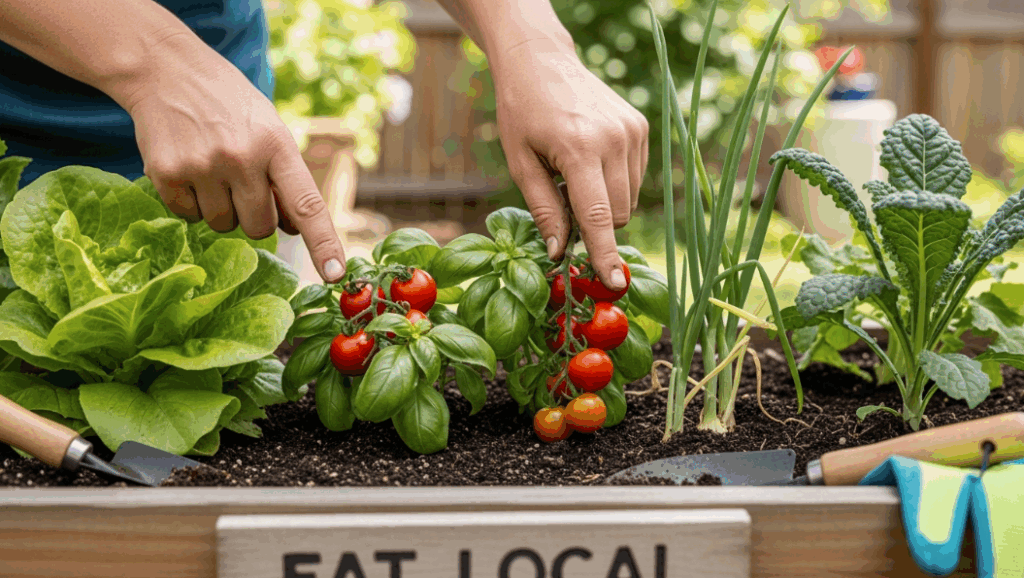



Selecting the right species is essential when creating a food forest. Aim for a diverse mix of trees, shrubs, perennials, and annuals to form multiple layers.
Canopy Layer: Fruit and Nut Trees
At the top layer, choose dwarf or semi-dwarf fruit trees apple, pear, cherry, or nut trees like hazelnut. These long-lived specimens form the backbone of your edible landscaping and yield abundant fruit with proper pruning. For scientific background, see research on fruit and nut trees in edible landscaping.
Understory Layer: Berry and Shrub Crops
Beneath the canopy, plant shrubs such as blueberries, raspberries, currants, and elderberry. These edible plants provide seasonal harvests and fill the mid-layer of your food forest design.
Herbaceous Layer: Herbs and Vegetables
At ground level, integrate perennial herbs rosemary, thyme, mint and vegetables like lettuce, kale, and spinach. Edible landscaping thrives when you intersperse culinary herbs and salad greens among the shrubs and trees, maximizing space and yield.
Applying Permaculture Principles
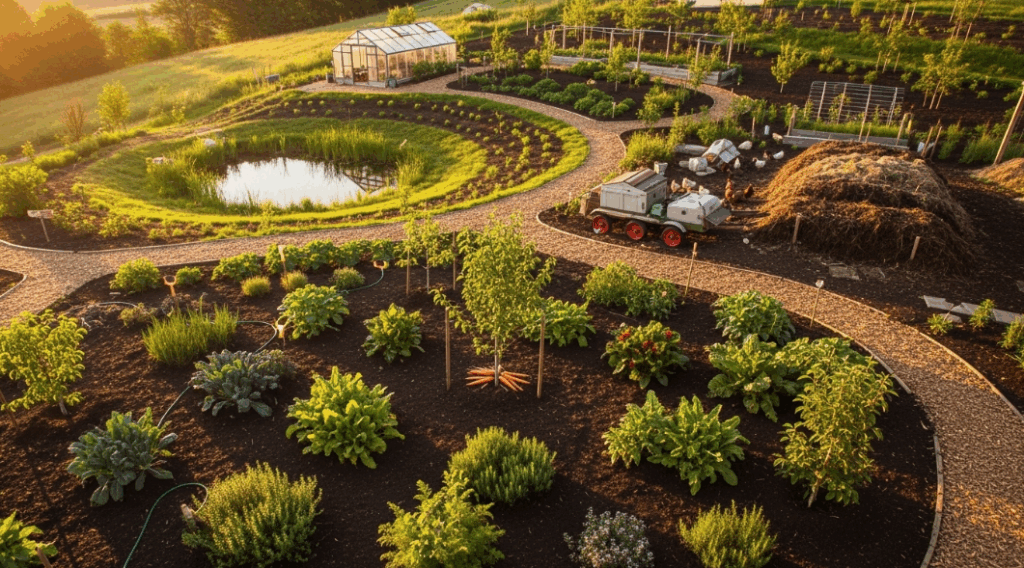



Permaculture principles serve as the foundation for edible landscaping. By observing natural ecosystems, you create a self-regulating environment that recycles nutrients and conserves resources.
Companion Planting and Guilds
Form plant guilds by grouping species that benefit each other. For example, a “three sisters” guild pairs corn, beans, and squash corn provides support for beans, beans fix nitrogen, and squash suppresses weeds with its broad leaves. Companion planting improves pest control and nutrient cycling without synthetic inputs.
Mulching and Soil Building
Use organic mulch wood chips, straw, or leaf litter to retain moisture, suppress weeds, and feed soil organisms. Over time, decomposition enriches the soil, fostering healthy root systems for all edible forest layers.
Designing for Year-Round Yield
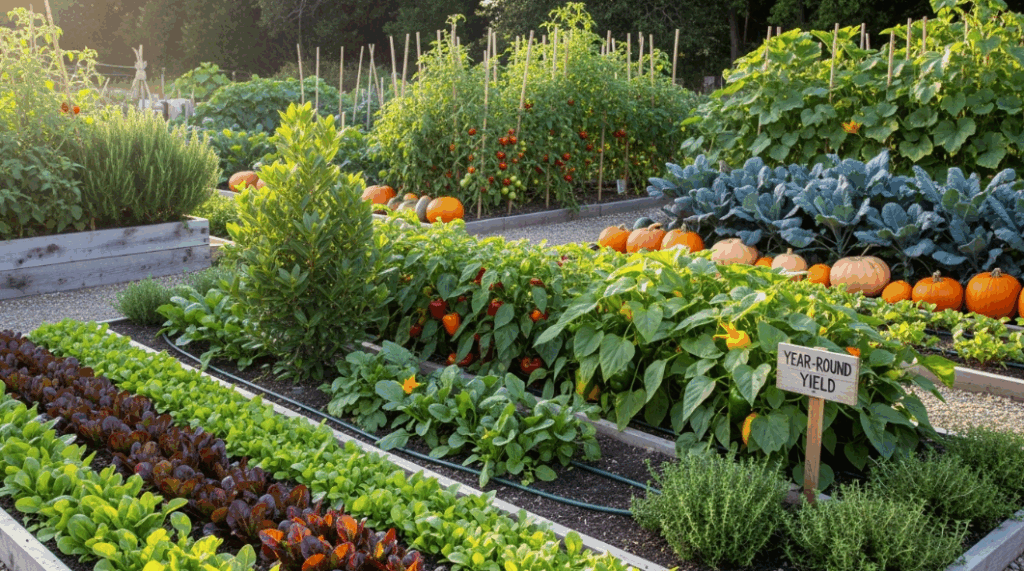
A thoughtfully designed edible landscaping plan accounts for seasonal productivity. Include early-spring greens like arugula, summer staples like tomatoes and peppers, and fall crops such as squash and kale. Evergreen herbs bay leaf, rosemary provide year-round interest and harvests. Stagger planting and succession sowing to ensure your food forest never runs dry.
Water Management and Irrigation
Efficient water use is vital in a thriving food forest. Capture rainwater with barrels or swales and direct runoff into planting zones. Drip irrigation systems deliver water directly to roots, reducing evaporation. Group plants by water needs to avoid over- or under-watering, a key sustainable gardening tactic.
Maintaining Your Edible Landscape
Once established, your edible landscaping requires minimal upkeep compared to conventional gardens. Regular tasks include mulching annuals, pruning fruit trees to maintain shape and air circulation, and monitoring for pests or disease. Use natural pest control methods introduce ladybugs, spray neem oil, or apply diatomaceous earth to protect your plants without harsh chemicals.
Pruning and Thinning
Prune trees and shrubs in late winter to remove dead wood, improve sunlight penetration, and encourage air flow. Thinning fruit helps prevent branch breakage and increases berry size in shrubs.
Soil Testing and Amendments
Test soil pH annually and adjust with lime or sulfur as needed. Top-dress beds with compost in spring to replenish nutrients. A healthy soil supports robust roots and high yields across all edible landscaping layers.
Harvesting and Utilizing Your Bounty
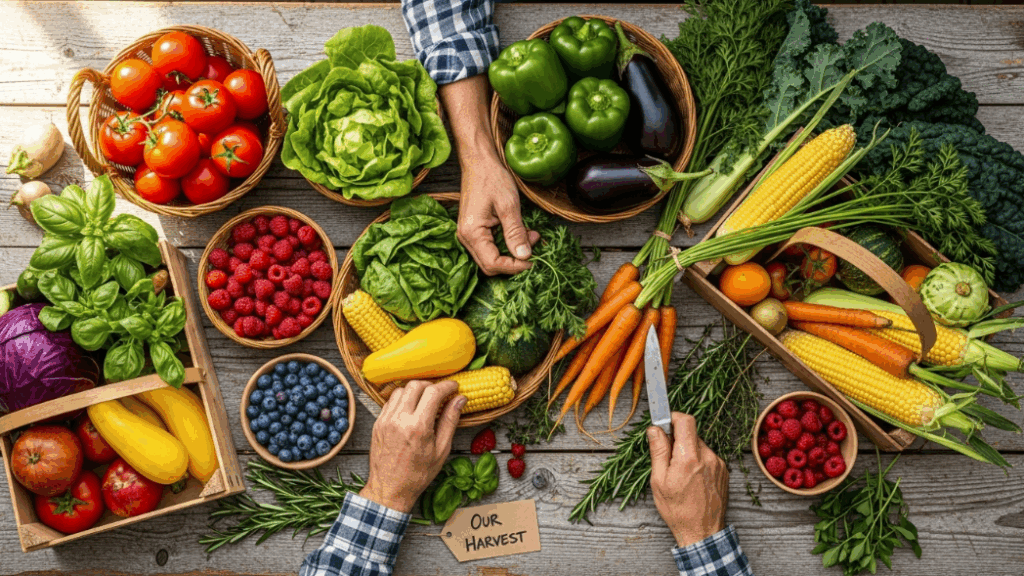
Harvest at peak ripeness for best flavor and nutrition. Pick leafy greens in the morning when they’re crisp, and harvest fruits as they develop full color. Preserve surplus produce by freezing, canning, drying, or fermenting allowing you to enjoy homegrown flavors year-round.
Creative Uses for Homegrown Produce
Turn herbs into infused oils and vinegars, berries into jams and pies, and greens into nutrient-packed smoothies. Edible landscaping not only feeds your body but also inspires culinary creativity.
Conclusion
Edible landscaping transforms ordinary yards into productive, beautiful food forests that nourish body and soul. By applying permaculture principles, selecting diverse edible plants, and designing for efficiency, you cultivate an ecosystem that thrives with minimal intervention. Start small plant a fruit tree guild or herb border and expand gradually. Embrace sustainable gardening and watch your home landscape become a bountiful, self-sustaining food forest.
Ready to begin your edible landscaping journey? Download our free food forest planning worksheet and subscribe for seasonal planting guides!
| Edible Landscape Layer | Examples | Purpose |
|---|---|---|
| Canopy Layer | Apple, pear, cherry, hazelnut trees | Provides fruit and nuts, forms structure |
| Understory Layer | Blueberries, raspberries, currants, elderberry | Seasonal harvest, mid-layer fill |
| Herbaceous Layer | Rosemary, thyme, mint, lettuce, kale, spinach | Culinary herbs and vegetables, ground coverage |
